Key takeaways:
- Inspiration for lyric writing often arises unexpectedly from personal experiences and surroundings.
- Effective lyrics emphasize clarity, imagery, rhythm, and emotional connection to engage listeners.
- Collaboration and sharing ideas with other artists can significantly enhance the lyric writing process.
- Personal experiences, metaphors, and details from one’s environment can transform lyrics into relatable and authentic expressions.

Understanding lyric writing processes
Understanding the lyric writing process often starts with inspiration, which can strike at the most unexpected moments. I remember walking down the street one day, and a line just popped into my head. Isn’t it fascinating how our surroundings can spark creativity in such a vivid way?
The emotional connection behind lyrics is crucial. I’ve found that tapping into my feelings leads to deeper, more relatable content. Have you ever listened to a song and felt like it was speaking directly to your own experiences? That power of connection is what I strive for, blending personal truths with universal themes.
In my experience, the collaboration with producers or fellow writers can elevate the lyric writing process. Sharing ideas and receiving feedback can shift your perspective in unexpected ways. Sometimes, the best lines come from a spontaneous conversation or a brainstorming session. How often do you allow that kind of exchange to influence your writing? I’ve learned that openness can breathe new life into my work.
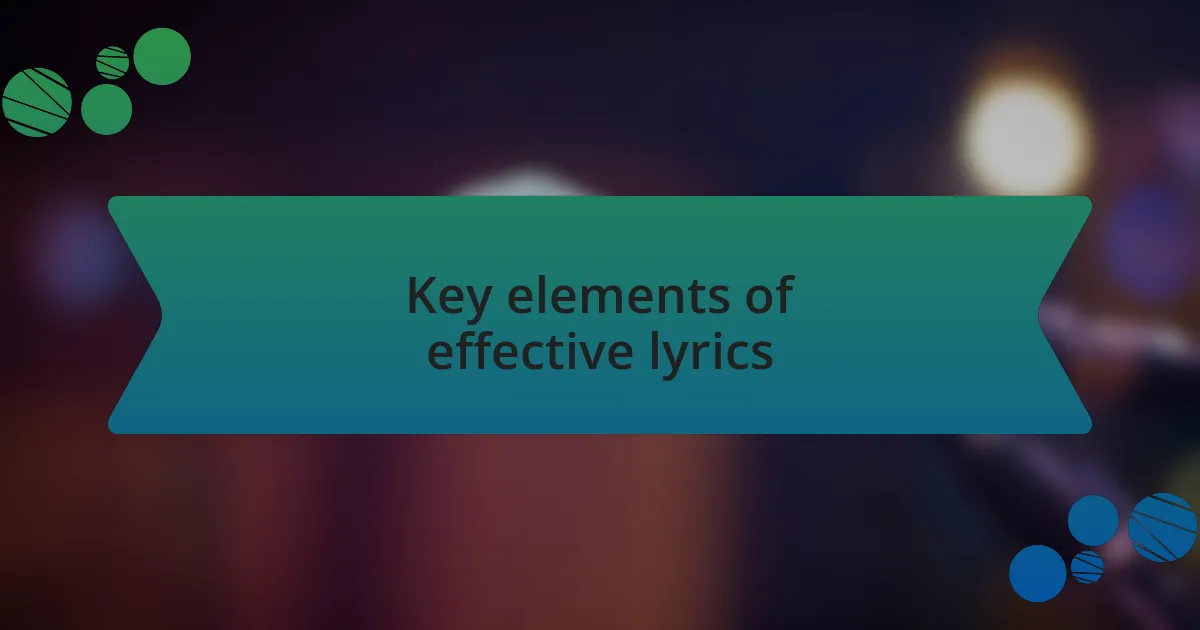
Key elements of effective lyrics
When crafting effective lyrics, clarity is essential. I remember writing a song where I tried to be clever with my words, but it just confused listeners. After refining the lyrics to convey a straightforward message, the song resonated much more with my audience. Have you ever felt lost in a complex lyric? Simple and clear expressions often leave a lasting impact.
Imagery also plays a significant role in lyric writing. A vivid scene can transport listeners, making them feel part of the story. One night, I wrote about a deserted city street bathed in neon lights, and the moment I performed it, the audience could visualize that loneliness. Isn’t it powerful how words can paint such relatable pictures in our minds?
Rhythm and flow are equally important. I’ve had moments where a catchy hook just flowed out effortlessly, while other times, I struggled to make the words fit the melody. The difference is often in how I embrace the music. Have you noticed how lyrics that sync perfectly with the beat can elevate an entire track? It’s a dance between words and sound that can create an unforgettable experience.
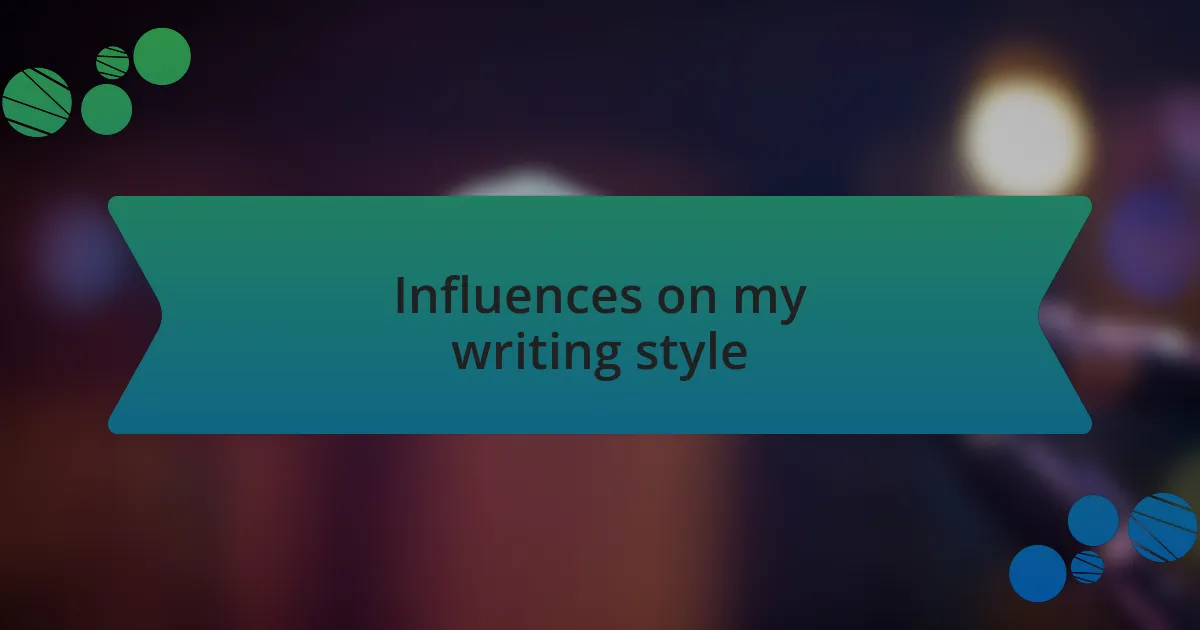
Influences on my writing style
When I reflect on the influences shaping my writing style, I can’t help but think about the artists who moved me early on. Bands like Massive Attack and Portishead opened my eyes to the power of mood and atmosphere in lyrics. Their ability to convey complex emotions with simple language taught me that sometimes, less is indeed more. Have you ever found yourself lost in a song, feeling exactly what the artist wanted you to feel?
My travels have also significantly impacted my writing. Each city I visit whispers its own stories, and those experiences seep into my lyrics. For instance, the vibrancy of Berlin’s nightlife inspired a track that captured the throbbing energy of the city, reminding me how place can shape narrative. Isn’t it incredible how different environments can breathe life into creativity?
Collaboration is another huge influence in my lyric writing. Working with other musicians exposes me to new perspectives and styles. I remember writing with a friend who comes from a hip-hop background; his rhythmic flow challenged me to think differently about my own lyrics. This exchange of ideas not only enriched my writing but also deepened my appreciation for diverse genres. Do you find that sharing creativity with others enhances your own work?
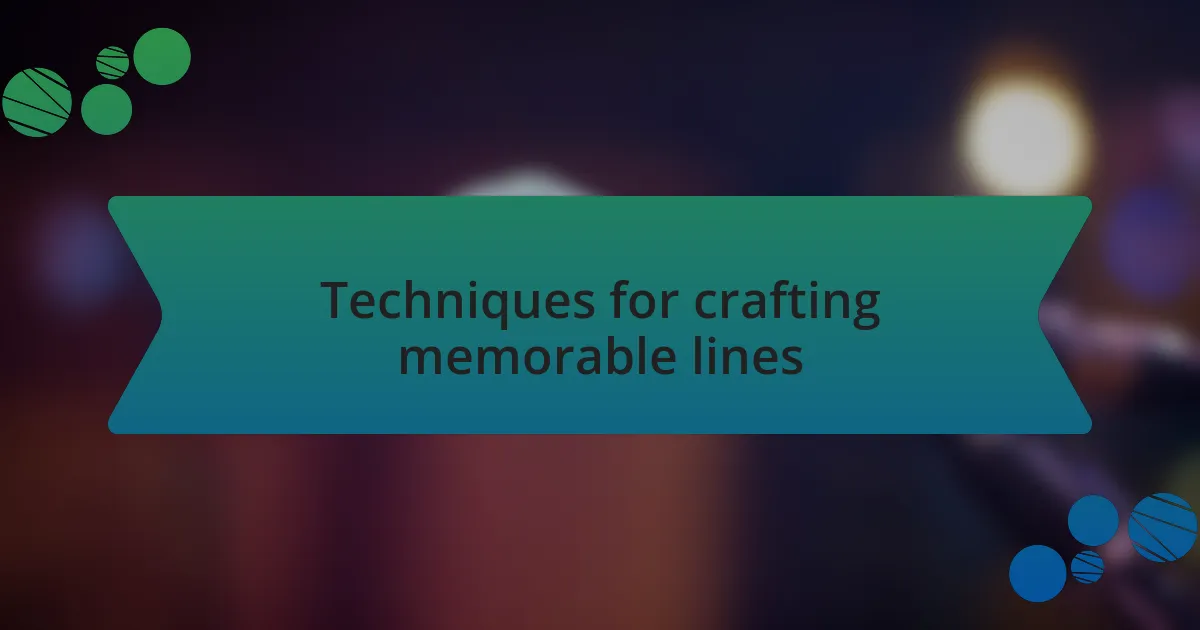
Techniques for crafting memorable lines
When I write lyrics, I often focus on resonance—finding phrases that linger in the listener’s mind. One technique I cherish is using vivid imagery that evokes strong emotions. I recall crafting a line about a “flickering streetlight” that seemed to capture a moment of uncertainty and beauty in a relationship. Doesn’t a single image like that make you pause and reflect?
Repetition can also be a powerful tool in lyric writing. I love to revisit key phrases or themes throughout a song to create a sense of familiarity. In one of my tracks, I intentionally repeated a line about “chasing shadows” to emphasize the struggle of self-discovery. Have you noticed how a repeated phrase can elevate a song, making it feel almost anthemic?
Another essential technique involves the use of contrast. Pairing light and dark elements can create a striking balance that captivates listeners. For instance, juxtaposing themes of euphoria with a sense of loss in my lyrics not only adds emotional depth but also keeps the audience engaged. Have you ever found yourself drawn to songs that beautifully navigate these emotional highs and lows?
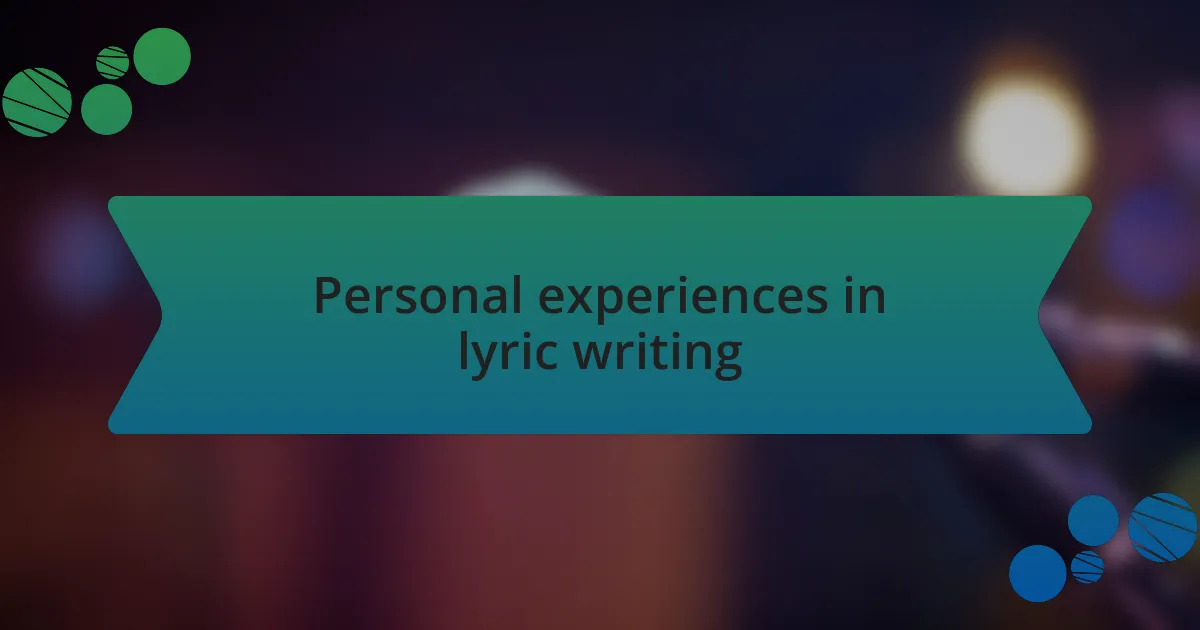
Personal experiences in lyric writing
When I sit down to write lyrics, often, my inspiration stems from real-life experiences. For instance, writing about the bittersweet feeling of a friend moving away helped me capture that sinking sensation of longing and nostalgia. Have you ever felt that ache when someone important leaves your life? Translating emotions like that into words can be a cathartic experience.
One time, I found myself crafting lyrics after an intense day filled with both triumphs and disappointments. It became easier to express that rollercoaster of emotions in metaphors; I compared my day to a “broken compass,” reflecting the confusion that often accompanies high stakes. Isn’t it fascinating how a simple metaphor can encapsulate complex feelings we often struggle to articulate?
Sometimes, I draw upon the world around me to infuse my lyrics with authenticity. I remember writing a song inspired by a late-night city stroll, with each street corner telling its own story. That vivid backdrop allowed me to weave in little details that transport listeners right there with me. Have you noticed how well-placed specifics can transform a song from generic to genuine?
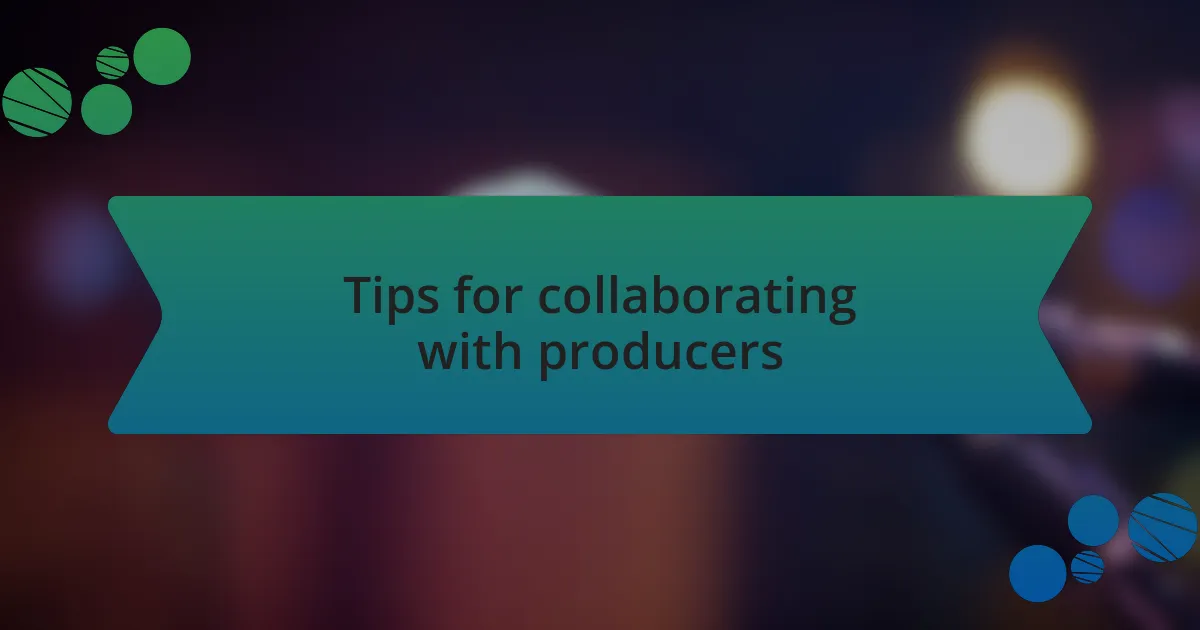
Tips for collaborating with producers
When collaborating with producers, communication is crucial. I remember a session where I felt hesitant to share an idea, thinking it might not fit the vision. But once I opened up, the producer helped refine it into something beautiful and unexpected. Have you ever held back in a creative setting? Don’t let fear stifle your input; sharing ideas can spark incredible creativity.
Another key tip is to remain flexible. In one project, I had envisioned a specific sound, but the producer suggested a different approach. Reluctantly, I agreed, only to discover that the new sound elevated the track beyond what I imagined. How often do we cling to our initial ideas? Being open-minded can truly enhance the collaborative process.
Lastly, always celebrate the little wins together. After nailing a verse that felt just right, I took a moment to high-five my producer. It may seem small, but acknowledging those milestones builds camaraderie. Have you noticed how important it is to foster a positive atmosphere in creative partnerships? Celebrating progress keeps the energy flowing and everyone engaged.